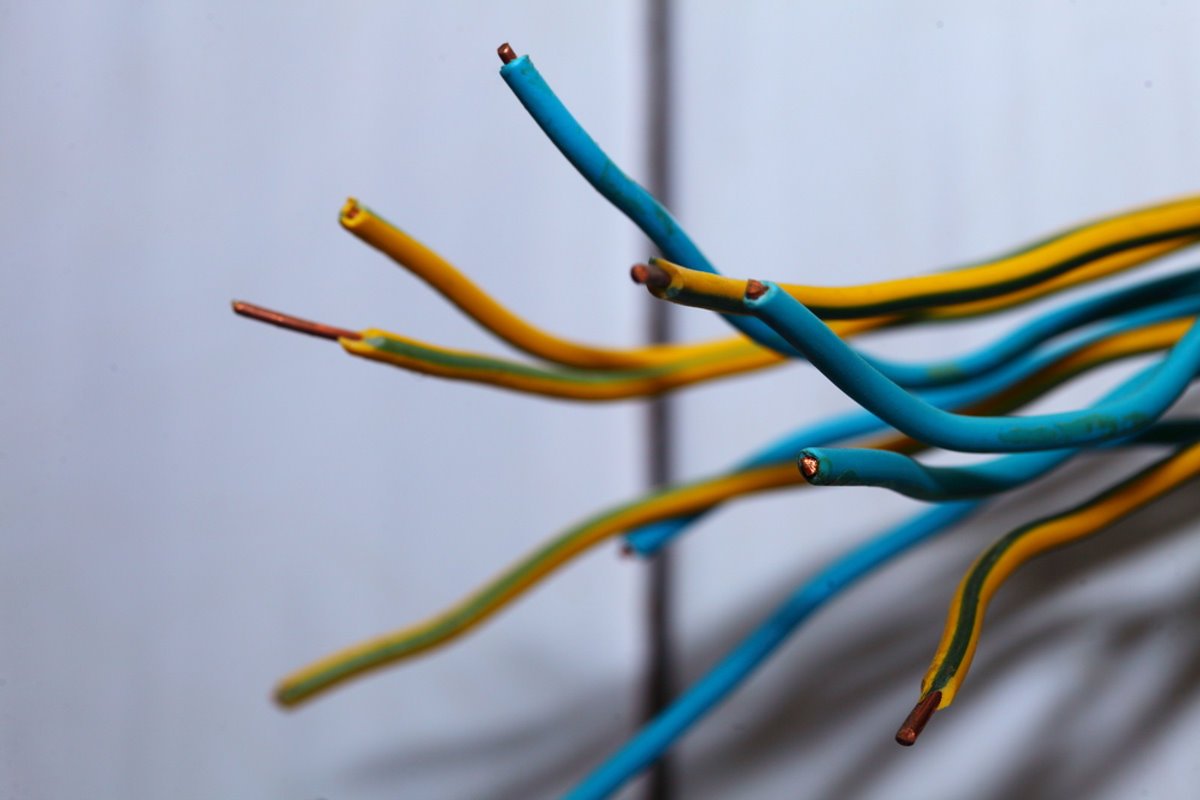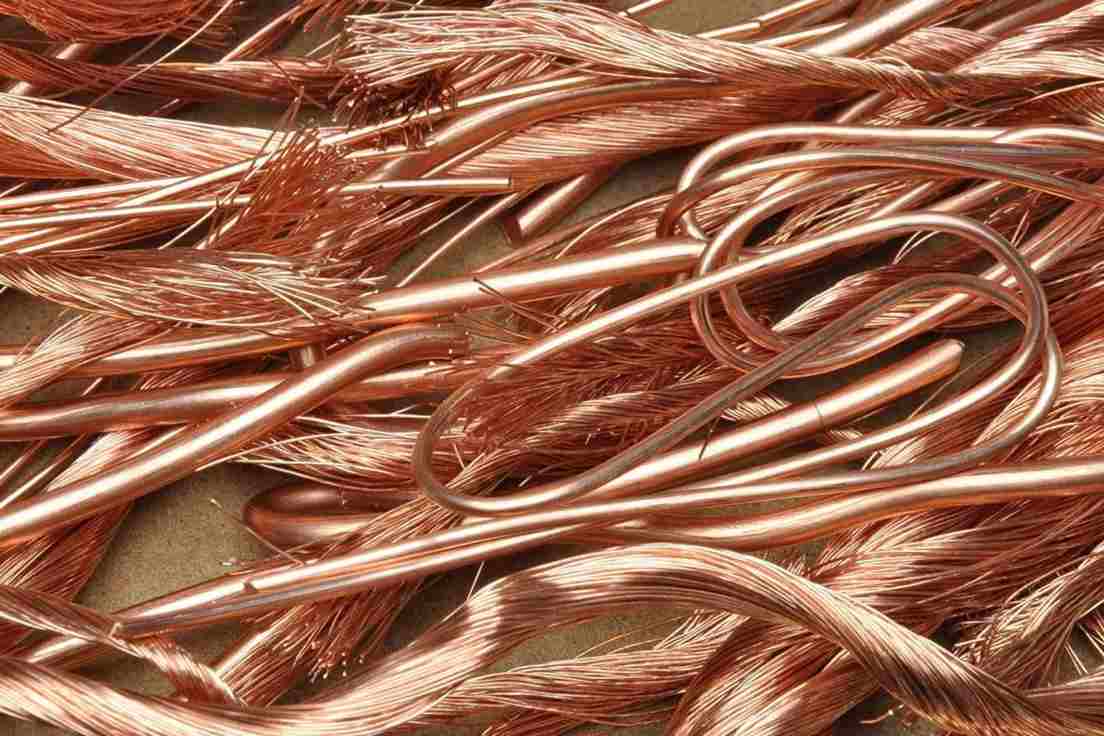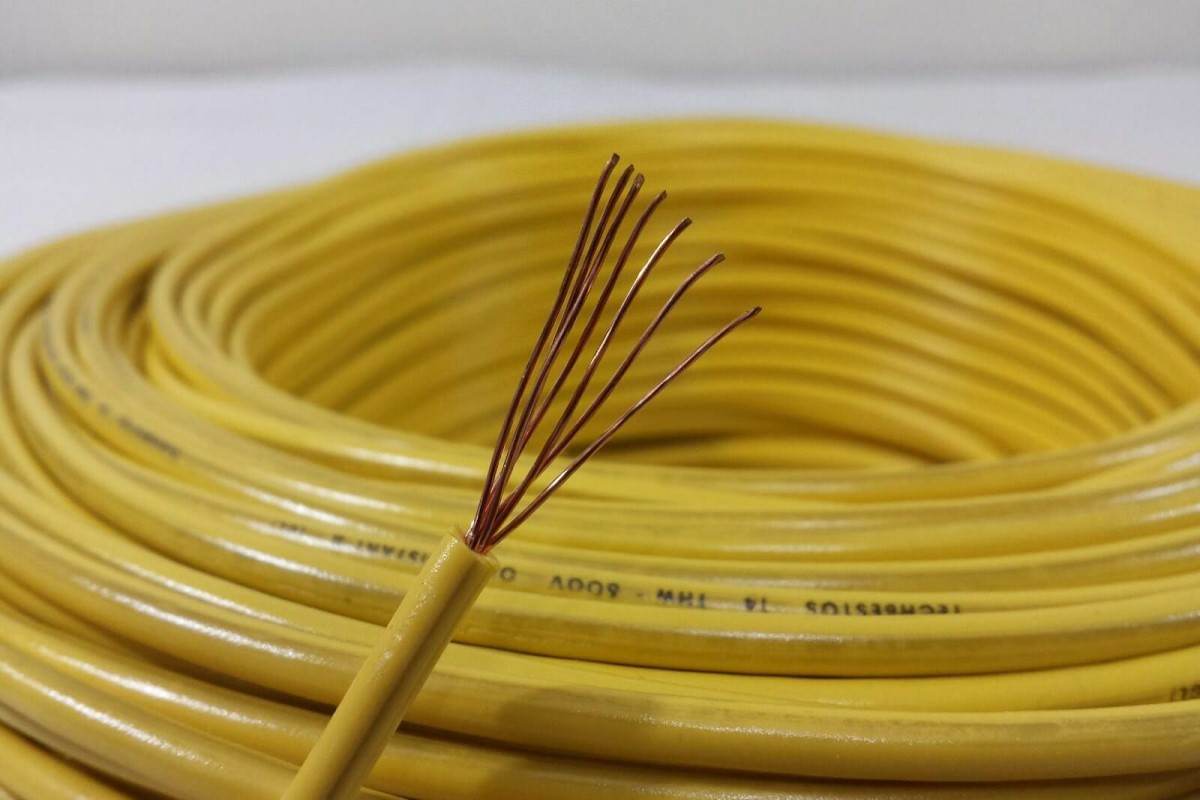In this article, we will be Putting the solid conductor VS the stranded conductor wire. For comparing these two, lots of factors shall be taken into account like the gauge size, application, and other factors. It's likely already common knowledge to you that twisted-pair copper cable can either be shielded or unshielded, and that it can have either stranded or solid wires. When it comes to deciding between the two options, there are a lot of factors to take into account, such as the standards, the environment, the application, and the cost. Let's have a look at the differences as well as the factors to consider, so that you can choose the type of cable that will work best for the installation you have in mind.  The initial distinction between solid wire cable and stranded wire cable is in the manufacturing process. The phrases "stranded" and "solid" refer to the physical construction of the copper conductors contained within the cable.
The initial distinction between solid wire cable and stranded wire cable is in the manufacturing process. The phrases "stranded" and "solid" refer to the physical construction of the copper conductors contained within the cable.
- Each of the eight copper conductors in a stranded cable is made up of many "strands" of small-gauge wires that are coiled together concentrically in a helix, much as a rope would be. This creates the conductor's unique structure. The quantity of strands and the wire's gauge are commonly defined for stranded wire using two numbers. The first number denotes the total number of strands, while the second number denotes the wire's gauge. For instance, a 7X32 (sometimes written as 7/32), which denotes that the conductor is made up of seven strands of wire with a gauge of 32 AWG, implies that there are seven strands of wire.
- A solid cable consists of eight individual conductors, each of which is a separate wire of a larger gauge than the others. When referring to the size of the conductor of a solid wire, you just need to specify a single gauge number, such as 24 AWG. The gauge of the solid conductor is the specification for the cable, and this applies whether the cable in question has one, two, or four pairs.
This gives rise to the most distinguishing feature, which is its adaptability. Stranded cables are far more flexible and can tolerate more bending than other types of cables. However, in terminations, the flexible strands can break or become loose with time. Stranded cables have many advantages over other types of cables. Solid conductors will keep their shape over time and will seat properly within insulation displacement connectors (IDCs) on jacks, patch panels, and connecting blocks. Solid cables, on the other hand, are more stiff and can break if they are bent too much or too frequently. Performance is a distinction between stranded and solid wire cable that is not as readily apparent. In general, solid cables are superior electrical conductors and give greater, stable electrical qualities over a wider range of frequencies than stranded cables do. Solid cables also tend to be more expensive than stranded cables. Because they have a smaller total surface area, solid conductors are thought to be more robust than stranded conductors.  They are also less likely to be impacted by vibration and are less likely to be prone to corrosion. A higher current can also be carried by solid wire compared to stranded wire. Conductors with a higher gauge (meaning they are thinner) have a higher insertion loss than conductors with a lower gauge (meaning they are thicker). Stranded cables display 20 to 50 percent more attenuation than solid copper conductors (20 percent for 24 AWG and 50 percent for 26 AWG). Compared to solid cables, stranded conductors have a higher DC resistance. This is due to the fact that the cross section of a stranded conductor does not consist entirely of copper (there is some air present). Let's go over the things you need to think about when choosing between stranded and solid cable now that you're familiar with the distinctions between the two types of cable. Which is better: Stranded Wire or Solid Wire? When it comes to horizontal permanent links that are 90 meters in length, there is no room for negotiation: both TIA and ISO/IEC specifications demand solid cable, regardless of whether the twisted pair is shielded or unshielded. Patch cords and 10-meter lengths of stranded cable (24 and 26 AWG) are the only acceptable uses for this type of cable inside a 100-meter channel. Because stranded cables are more flexible and can withstand bending, they make excellent patch cords for equipment connections and cross-connects where cables are frequently bent and manipulated; at just 10 meters of the channel, the increased insertion loss and resistance aren't a factor in the overall performance of the channel. Stranded cables also make excellent patch cords for equipment connections and cross-connects where cables are frequently bent and manipulated.
They are also less likely to be impacted by vibration and are less likely to be prone to corrosion. A higher current can also be carried by solid wire compared to stranded wire. Conductors with a higher gauge (meaning they are thinner) have a higher insertion loss than conductors with a lower gauge (meaning they are thicker). Stranded cables display 20 to 50 percent more attenuation than solid copper conductors (20 percent for 24 AWG and 50 percent for 26 AWG). Compared to solid cables, stranded conductors have a higher DC resistance. This is due to the fact that the cross section of a stranded conductor does not consist entirely of copper (there is some air present). Let's go over the things you need to think about when choosing between stranded and solid cable now that you're familiar with the distinctions between the two types of cable. Which is better: Stranded Wire or Solid Wire? When it comes to horizontal permanent links that are 90 meters in length, there is no room for negotiation: both TIA and ISO/IEC specifications demand solid cable, regardless of whether the twisted pair is shielded or unshielded. Patch cords and 10-meter lengths of stranded cable (24 and 26 AWG) are the only acceptable uses for this type of cable inside a 100-meter channel. Because stranded cables are more flexible and can withstand bending, they make excellent patch cords for equipment connections and cross-connects where cables are frequently bent and manipulated; at just 10 meters of the channel, the increased insertion loss and resistance aren't a factor in the overall performance of the channel. Stranded cables also make excellent patch cords for equipment connections and cross-connects where cables are frequently bent and manipulated.  However, smaller 28 AWG stranded patch cables, which have even more insertion loss and resistance due to their lower gauge, do have some limits. If you want to learn more about this topic, check out "The Skinny on 28 AWG Patch Cords." Open office spaces, on the other hand, provide unique challenges; because of the frequency with which they undergo layout changes, they may call for a cable management system that is more adaptable. Stranded patch cords can use up more than 10 meters of the channel in those installations because the standards allow it. However, according to industry regulations, you are required to de-rate the total length of the channel if you use more than 10 meters of stranded cable in the channel. This is done to account for the larger insertion loss and DC resistance that will be present. When it comes to de-rating stranded cable in accordance with industry standards, the total gauge is a consideration: cables with a larger gauge (which indicates a thinner diameter) have a higher de-rating factor. Stranded cable with 26 AWG gauge requires a de-rating of 0.5, but stranded cable with 24 AWG requires just 0.2, and stranded cable with 22 AWG requires no de-rating at all. The calculations to estimate the overall channel length are as follows, where H stands for horizontal cable length, D stands for the de-rating factor, C stands for the total stranded cable length, and T stands for the total channel length. For instance, if you are going to use 40 meters of stranded 24 AWG category 6A patch cable and 60 meters of horizontal solid category 6A cable, the total length of the channel needs to be shortened to 97.5 meters. This is because the de-rating factor is 0.2. (If you prefer the exact arithmetic, the entire length of the stranded cable is calculated as [105-60]/[1 + 0.2], which equals 37.5, and the total length of the channel is calculated as 60+37.5, which is 97.5 meters.)
However, smaller 28 AWG stranded patch cables, which have even more insertion loss and resistance due to their lower gauge, do have some limits. If you want to learn more about this topic, check out "The Skinny on 28 AWG Patch Cords." Open office spaces, on the other hand, provide unique challenges; because of the frequency with which they undergo layout changes, they may call for a cable management system that is more adaptable. Stranded patch cords can use up more than 10 meters of the channel in those installations because the standards allow it. However, according to industry regulations, you are required to de-rate the total length of the channel if you use more than 10 meters of stranded cable in the channel. This is done to account for the larger insertion loss and DC resistance that will be present. When it comes to de-rating stranded cable in accordance with industry standards, the total gauge is a consideration: cables with a larger gauge (which indicates a thinner diameter) have a higher de-rating factor. Stranded cable with 26 AWG gauge requires a de-rating of 0.5, but stranded cable with 24 AWG requires just 0.2, and stranded cable with 22 AWG requires no de-rating at all. The calculations to estimate the overall channel length are as follows, where H stands for horizontal cable length, D stands for the de-rating factor, C stands for the total stranded cable length, and T stands for the total channel length. For instance, if you are going to use 40 meters of stranded 24 AWG category 6A patch cable and 60 meters of horizontal solid category 6A cable, the total length of the channel needs to be shortened to 97.5 meters. This is because the de-rating factor is 0.2. (If you prefer the exact arithmetic, the entire length of the stranded cable is calculated as [105-60]/[1 + 0.2], which equals 37.5, and the total length of the channel is calculated as 60+37.5, which is 97.5 meters.)  The channel length needs to be shortened to 90 meters if you are going to be using stranded cable with a 26 AWG gauge and a de-rating of 0.5. Patch cords at patching areas in the telecommunications room (TR) and at the work area (perhaps longer than 10 meters in open offices) typically make use of stranded cable. However, a primary application to consider in today's local area networks (LANs) warrants the use of solid patch cords. This application is Power over Ethernet (PoE). When Power over Ethernet is sent using a copper cable with twisted pairs, part of the power is lost as heat. The temperature of the cable rises whenever the power is lost in the form of heat. Since stranded patch cables have a larger insertion loss and DC resistance, the transmission performance of these cords is more likely to suffer when exposed to higher temperatures. Stranded patch cords are not normally a cause for worry in environmentally controlled rooms such as the TR; however, once you begin connecting equipment in the ceiling, such as wireless access points, security cameras, LED lighting, and other electronic components, this could become an issue. Patch cords made of solid cable should be used if the environment cannot be controlled for temperature and the cable does not need to flex too much because this is the best practice. If you must utilize stranded patch cables in conditions that are not under strict control, it is best to keep them as short as possible (about 5 meters or less). And when it comes to situations with greater temperatures, industry regulations necessitate de-rating channel length for that as well; having more cables in a bundle, each of which generates more heat, can require even more length de-rating than what is already required (though there can be An Exception to Every Rule).
The channel length needs to be shortened to 90 meters if you are going to be using stranded cable with a 26 AWG gauge and a de-rating of 0.5. Patch cords at patching areas in the telecommunications room (TR) and at the work area (perhaps longer than 10 meters in open offices) typically make use of stranded cable. However, a primary application to consider in today's local area networks (LANs) warrants the use of solid patch cords. This application is Power over Ethernet (PoE). When Power over Ethernet is sent using a copper cable with twisted pairs, part of the power is lost as heat. The temperature of the cable rises whenever the power is lost in the form of heat. Since stranded patch cables have a larger insertion loss and DC resistance, the transmission performance of these cords is more likely to suffer when exposed to higher temperatures. Stranded patch cords are not normally a cause for worry in environmentally controlled rooms such as the TR; however, once you begin connecting equipment in the ceiling, such as wireless access points, security cameras, LED lighting, and other electronic components, this could become an issue. Patch cords made of solid cable should be used if the environment cannot be controlled for temperature and the cable does not need to flex too much because this is the best practice. If you must utilize stranded patch cables in conditions that are not under strict control, it is best to keep them as short as possible (about 5 meters or less). And when it comes to situations with greater temperatures, industry regulations necessitate de-rating channel length for that as well; having more cables in a bundle, each of which generates more heat, can require even more length de-rating than what is already required (though there can be An Exception to Every Rule).  The bigger the number of strands in a conductor, the greater its flexibility; nevertheless, the higher the strand count, the higher the price. Stranded category 6 and category 6A cable are designed to establish a balance between the number of strands necessary to retain the appropriate level of flexibility and the number of strands necessary to prevent a significant increase in the cable's cost. If you choose stranded wire cable instead of solid wire cable for conditions and applications for which it is not suited, you do not have to make a sacrifice in terms of performance (or in terms of standards compliance). Solid wire cable should be used whenever tough performance (and minimal bending) is necessary, while stranded cable should be kept in places that are environmentally regulated and require higher flexibility. We offer a wide variety of wire and cable with the policy of pricing our products reasonably lower than the global market prices. You can easily contact us and rest assured that you will have a price reasonably lower than the market. So fill out the inquiry form, let us know what you require and we will contact you momentarily.
The bigger the number of strands in a conductor, the greater its flexibility; nevertheless, the higher the strand count, the higher the price. Stranded category 6 and category 6A cable are designed to establish a balance between the number of strands necessary to retain the appropriate level of flexibility and the number of strands necessary to prevent a significant increase in the cable's cost. If you choose stranded wire cable instead of solid wire cable for conditions and applications for which it is not suited, you do not have to make a sacrifice in terms of performance (or in terms of standards compliance). Solid wire cable should be used whenever tough performance (and minimal bending) is necessary, while stranded cable should be kept in places that are environmentally regulated and require higher flexibility. We offer a wide variety of wire and cable with the policy of pricing our products reasonably lower than the global market prices. You can easily contact us and rest assured that you will have a price reasonably lower than the market. So fill out the inquiry form, let us know what you require and we will contact you momentarily.
